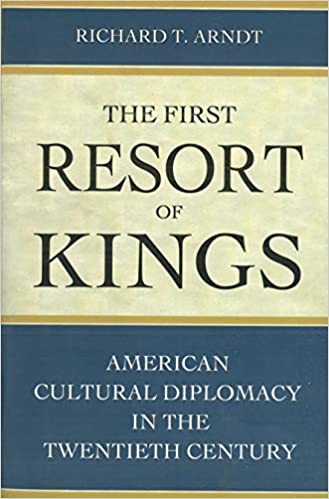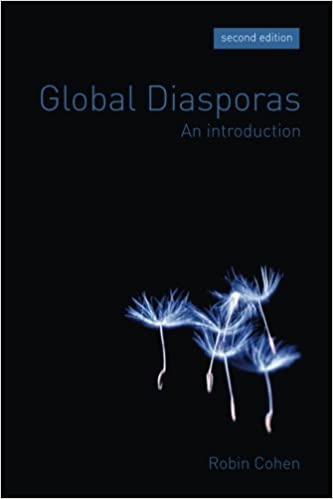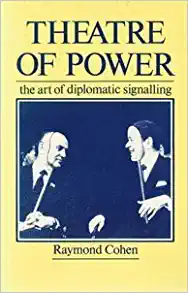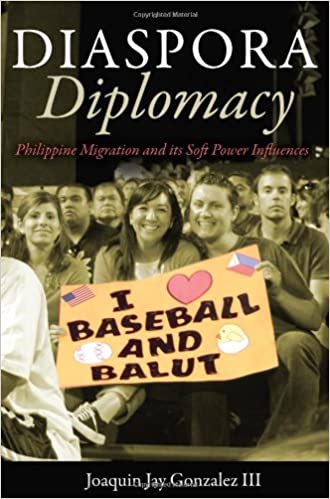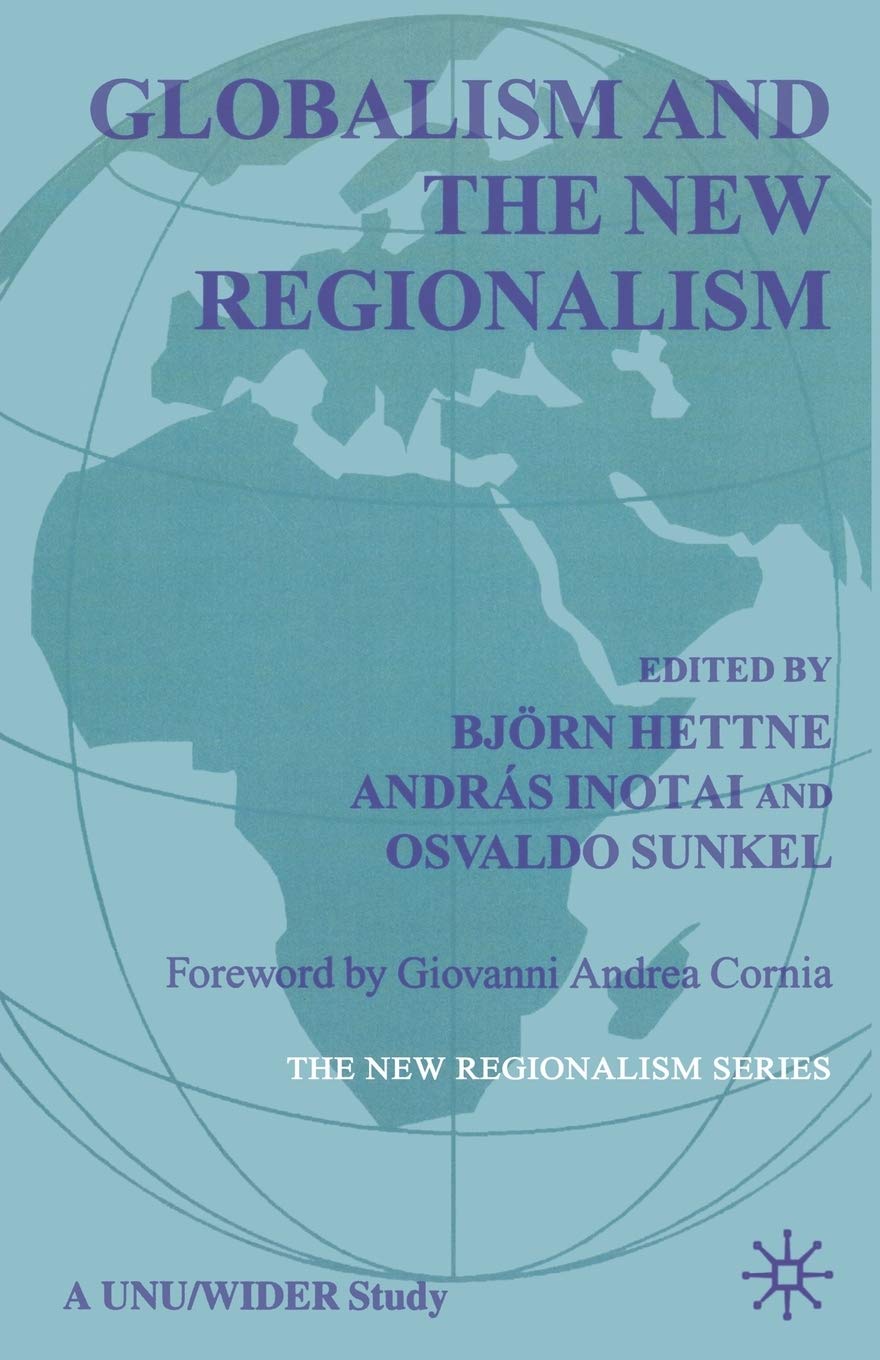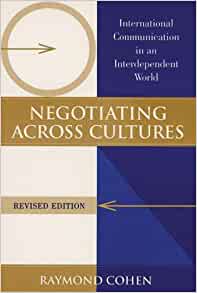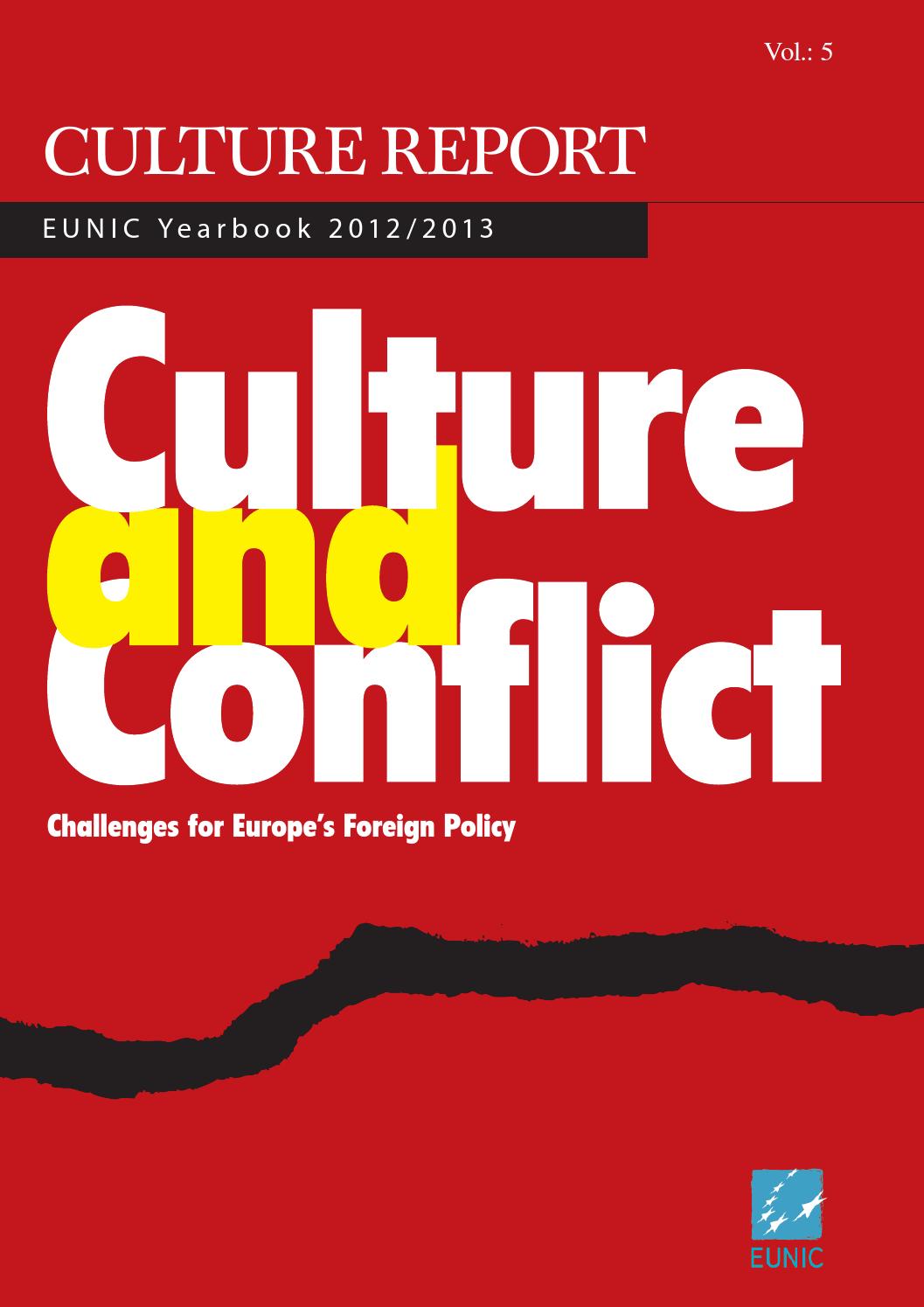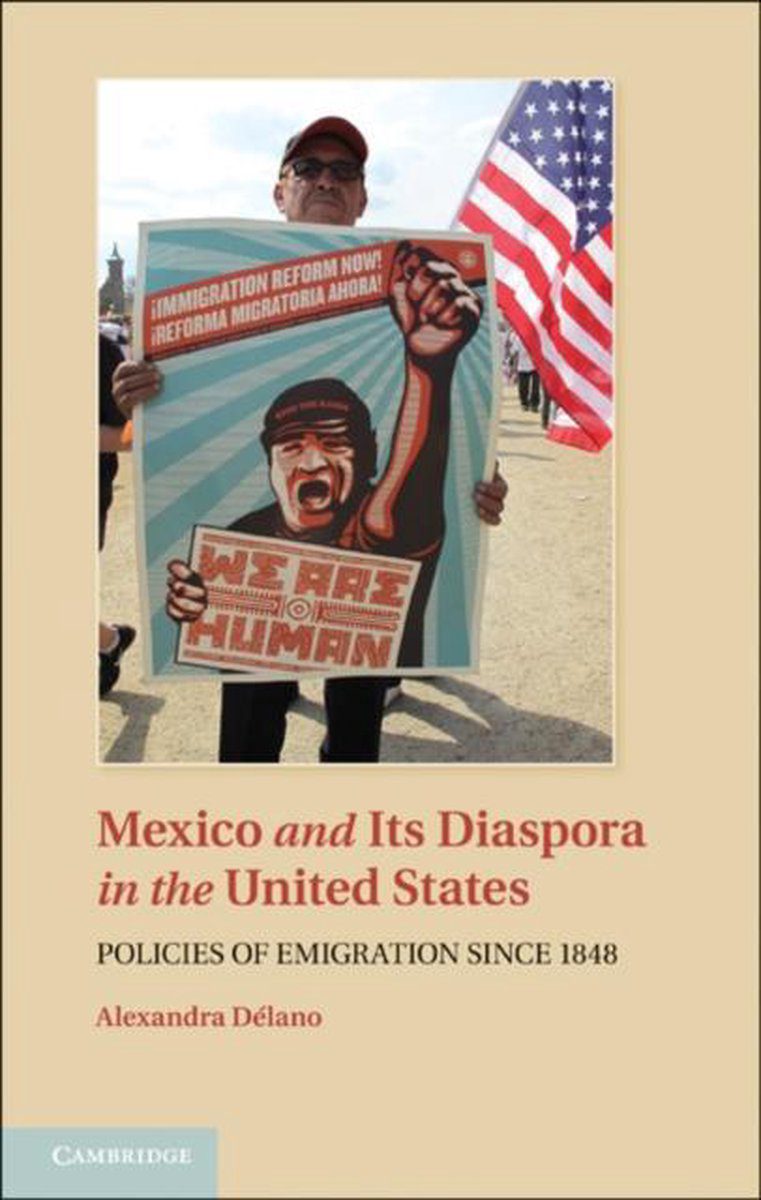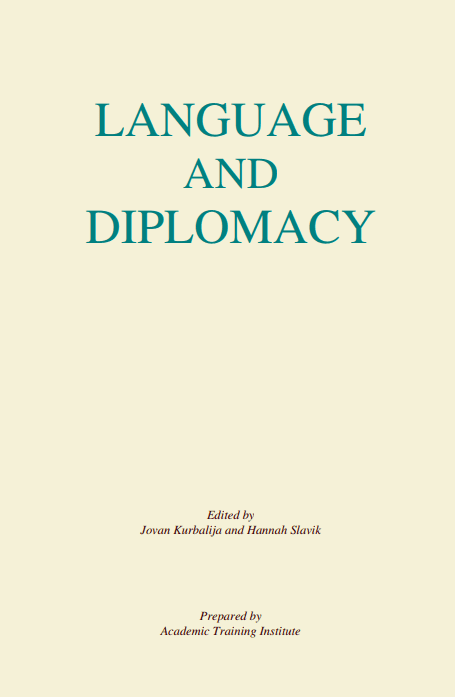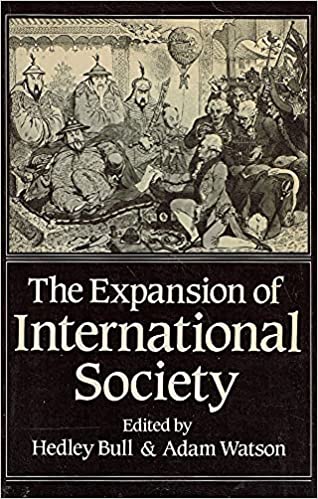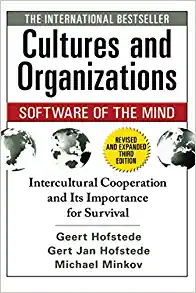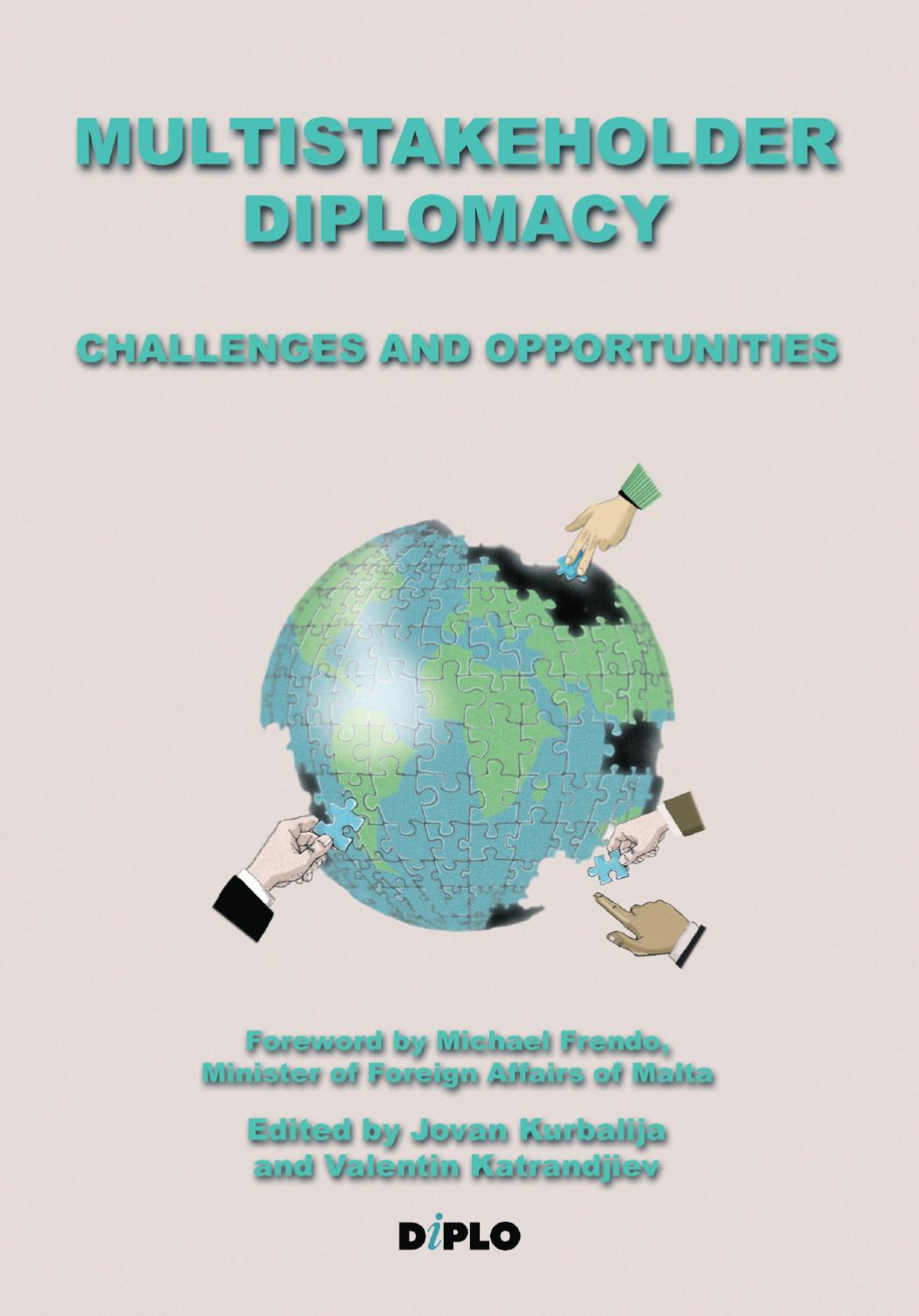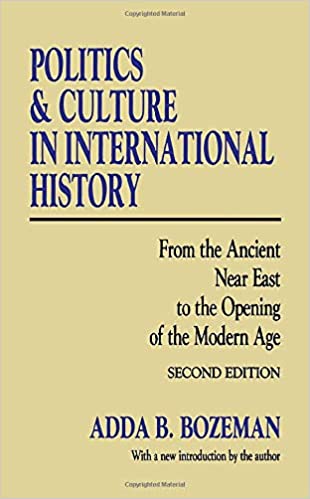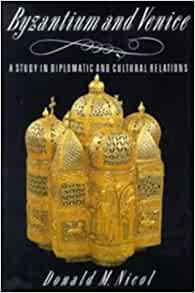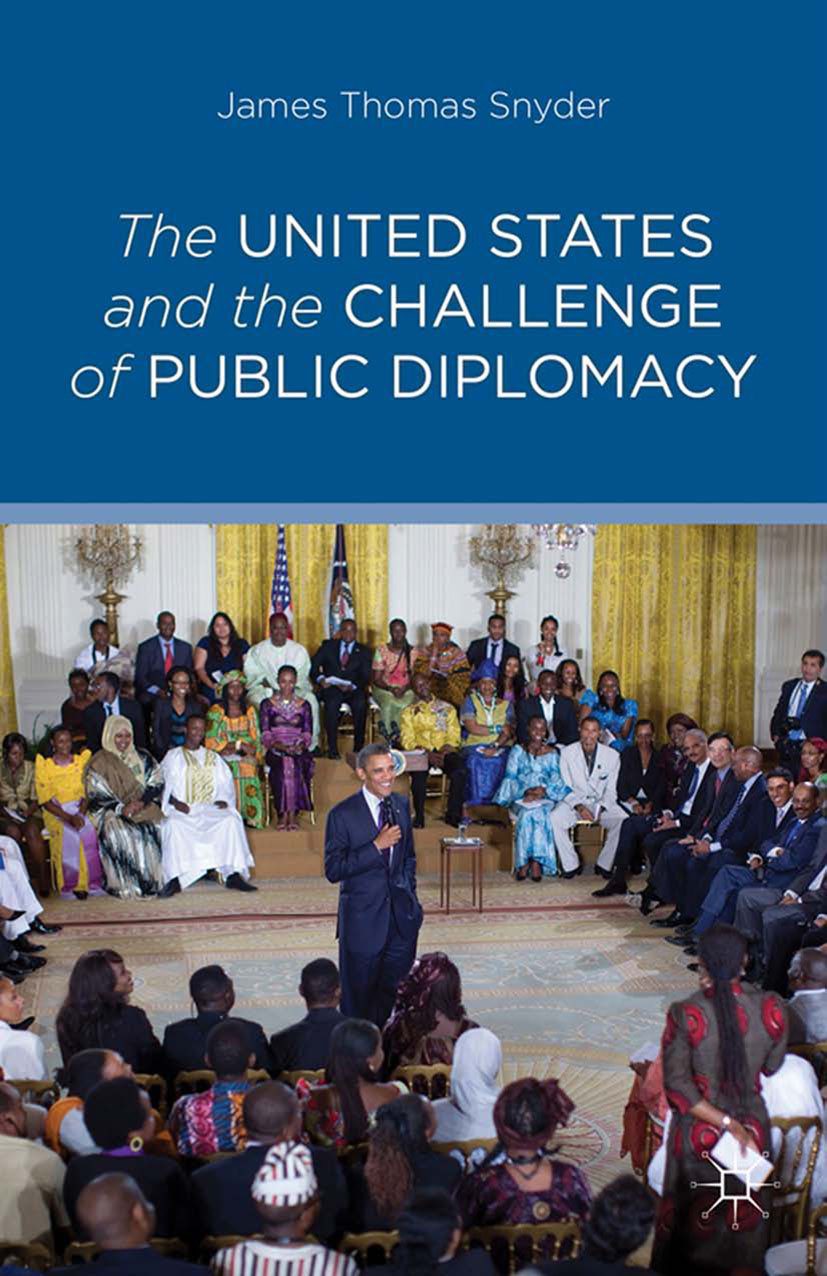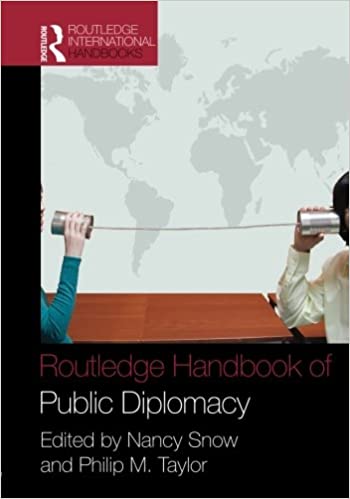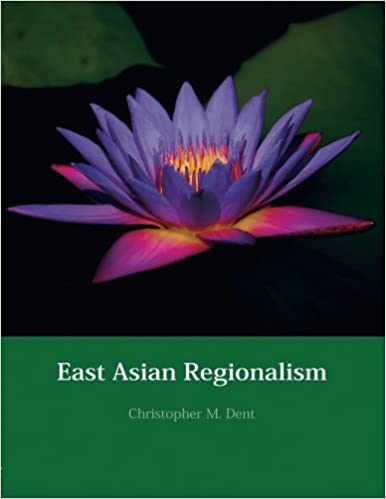
This cartoon, from the end of the 18th century, suggests that there is room for some bridge-building between cultures. The need for bridge-building between cultures is related to the reality that the world consists of different countries, a fact rooted in history.1This paper is based on the keynote presentation given by Geert Hofstede at the Second International Conference on Intercultural Communication and Diplomacy: Organisational and Professional Cultures and Diplomacy, Malta, 13 February 2004. The people who live in a particular country are supposed to have a common identity, and at least most of the people in a given country do share many elements of this common identity. This identity is something visible to the people themselves and to outsiders and it is rooted in things like a common language or languages or a common religion.
On the other hand, within different countries different institutions exist. Institutions are common to the country; they start from family structure, which differs from one country to another. Other examples include the educational structure (the kind of schools and the entire school system in which they are embedded), the government system, the way the economy is organized, the way social classes are organized, and also the way sports and media are organized. It includes the system of laws: not only the laws themselves, but also the way in which they are applied and maintained. The ways these institutions work are visible, as are elements of national identity, but in between the two there is a block which I call “culture”, as shown in Figure 1.

The word “culture” has several meanings – at least three are given in the dictionary. The basic meaning is that of tilling of the soil and growing something. The word is also used in two metaphoric senses: one is culture in the sense of civilization. This is the domain of the ministries of culture that work in many countries, and involves activities such as theatre, literature, and sometimes aspects of education. The second metaphorical sense is broader, including all the ways of thinking, feeling and acting that are common to the people of a particular country.
I would like to propose my own definition for culture in the broader sense: culture is the collective programming of the mind distinguishing the members of one group or category of people from another. I use the word “programming” as a metaphor, without intending to suggest that the minds of people are programmed like computers. This “programming” has three elements. First, it is collective rather than individual. If we talk about individuals, we have to look at personality. Second, it is programming of the mind, which means that it is somewhere inside us, but you can’t judge from the outside how a person is programmed. You have to see a person acting in order to learn about his or her programming. And, finally, this programming distinguishes the members of one group or category of people from another.
This definition applies not only to the national culture, but also to professional cultures such as that of the diplomat, organizational cultures, cultures of departments within an organization, and even to the genders and generations: grandparents, parents and children.
The categories shown in Figure 2, known as the “onion,” are used to study or observe culture. Like an onion, culture consists of several layers, and the outside layer is called symbols. Symbols are words, gestures, or objects with a meaning that is immediately recognized by people within the culture but not necessarily by others. For example, driving a particular type of car has a particular meaning in a given culture. If you come from the outside, you simply see a vehicle with four wheels which does everything a car should, but you don’t necessarily understand why it may be important to have that particular type of car.

The next layer is “heroes.” Heroes are people about whom articles are written, people who get their pictures in the newspapers or appear on television. Heroes are the people children are told about. Each culture has its own particular heroes who express something very dear to that culture. Even cartoon figures are popular in some countries because they express something which is dear to the heart of that culture.
Rituals, the next layer, are activities we engage in for their own sake, not necessarily for a purpose, but simply because it is socially necessary to engage in them. Many meetings have a ritual rather than a technical necessity. For example, we meet not because we have something to discuss, but because it is Monday.
One example of a ritual we all engage in, perhaps without realizing it, is the way we make telephone calls, and particularly the way we answer the telephone. Suppose you call an American. What do you expect to hear when the American picks up the phone? “Hello.” Now you call somebody in Britain, at home, not in the office. What do you expect to hear when you call somebody in Britain? His telephone number. Someone in Britain told me that this is because the telephone lines are so bad that you always have to verify whether you have the right connection. Of course, this is just a rationalization, because the practice is a ritual. Now you call somebody in Spain. What do you expect to hear? Dígame. Now you call somebody in China or Hong Kong. Wé. Wé. The wé is interesting because it is not the equivalent of “hello.” The reaction to “hello” is that the speakers immediately start their conversation. With wé, the other person reacts by saying wé as well. The speakers respond to each other with wé, wé, wé, wé a few times. But then at a given moment they start to talk. The speakers are more or less feeling each other out with this wé. When you call somebody in Holland they answer the phone with their name. Why do we do that? I don’t know: I was brainwashed as a student. When I didn’t say my name on the phone, the other fellow would say, “Well, you stupid, couldn’t you tell me your name?” So now, that’s what we all do.
These are rituals: we don’t know exactly why we do them, but we do do them. Symbols, heroes and rituals together are called practices. Practices are the visible parts of a culture.
Underneath the practices lie values. Values are at the emotional level; they are emotions with a plus and a minus. They relate to the things we consider good or evil, safe or dangerous, clean or dirty, normal or abnormal, or rational or irrational$(When I was teaching at the departments of Economics and Business Administration, some of my colleagues were dealing with rational choice models. With my background, I would ask them, “OK, whose rationality do you apply?” That is not a popular question to ask an economist!)2When I was teaching at the departments of Economics and Busines s Administration, some of my colleagues were dealing with rational choice models. With my background, I would ask them, “OK, whose rationality do you apply?” That is not a popular question to ask an economist!, for example.
The important thing about values is that they are often not conscious, because they belong to the first things we have learned. When we are born, we absorb information at a very fast rate. As a doctor explained to me, it’s almost the way we are wired. We have a period of super sensitivity for about ten years when we absorb information, much of it non-codified. This information includes our values. These values are inside of us, and they are not even discussible, because they are not conscious. But these values are in our guts. They are on the emotional level rather than the intellectual level. Therefore, we have the feeling that what we do, of course, is normal, and what others do is abnormal. What we do is good, what others do is evil3Some of the misgivings people have about globalization are related to values. The rationality of these people is different from that of the international organizations or large companies..
Some famous political statements reflect this, for example, from the nineteenth century, “Perfidious Albion,” referring to Britain. In the twentieth century Ronald Reagan referred to the Soviet Union as the “Evil Empire,” meaning of course that while they are evil, we are good! More recently, we have the “Axis of Evil,” and if there is an Axis of Evil there must also be an Axis of Good.
A final example is the statement “a lack of moral fibre,” said, believe it or not, about Holland. This statement was made by the famous US columnist Walter Laqueur when he wrote about the Dutch, because he thought the Dutch didn’t want to spend enough money on their defense. So, he decided that the Dutch had a lack of moral fibre.
You can find many such statements in the political field, where the basic law is that we are normal, and others may be evil. A cartoon from Asterix, “Le Domaine des Dieux”$(Literal translation: “The Domain of the Gods;” English title: “The Mansions of the Gods,” Book 17.)$, illustrates the point well. The story is about a project developer in Rome who has purchased lots in this French village. When the Roman families come the reaction of the locals is, “I’ve got nothing against foreigners, some of my best friends are foreigners. But these foreigners are not from here!” This is the problem with foreigners: as long as they behave, they’re OK. But as soon as they start behaving like foreigners they’re no longer OK. It’s a gut feeling that comes with values.
The Diplomat’s Profession
Diplomats are people who are on the fringe somewhere, because they are either permanently living in or at least dealing with alien cultures, cultures with different values. The success of a diplomat depends on this brinkmanship because, on the one hand, they must remain credible with their superiors back home and, on the other hand, they must have access to the leaders in the country where they are posted. This is a difficult situation, because if they understand the locals in the place where they are posted too well they may no longer be credible at home.
A short story from my IBM days illustrates a situation similar to that faced by diplomats. One of the top people in IBM in the US was nominated to become the general manager for the Asia-Pacific region and, among other things, to be the boss of the general manager of IBM Japan, which was an entirely Japanese organization. After some time, the employees in the head office in New York started to complain about the messages sent by this man, as they were quite different from before. The president of IBM, his boss, replied, “Well, this is interesting. You are absolutely right. This man shows remarkably poor judgment. However, my question is how can a man show such good judgment in New York and such poor judgment in Tokyo?” In fact, the president understood that if you are in Tokyo you have to send a different kind of message than that which you would send if you were in New York.
Of course, as a diplomat it is important to have support from people who understand the reality of the profession. Diplomats socialize in their daily lives with a very mixed group of people. This gives them the opportunity to become bridge-builders and cultural experts, because they have an enormous amount of practical knowledge about other cultures.
Some diplomats have tried to transfer their skills and knowledge into a science, a few actually becoming social scientists later in their careers. For example, Lord Acton was a British diplomat who at the end of the nineteenth century became a Cambridge professor. He is the author of the famous statement: “Power tends to corrupt. Absolute power corrupts absolutely.”
Another example is a Dutch diplomat named Johann Kauffman, who was at the same time a diplomat and a scholar. He was the Dutch representative at the United Nations in New York for some time. In 1968 he wrote a book called Conference Diplomacy where he described from a detached point of view how international conferences work and how diplomats can get their points of view heard there.
The last example I would like to mention is Glenn Fisher, an American diplomat who published a book called Mindsets: The Role of Culture and Perception in International Relations, in 1988. The interesting point here is that although he never read my work, he uses the term “mindset,” which is rather close to the term “programming of the mind” which I use. From a practical point of view, his ideas approach those I am describing rather closely.

What exactly is the science of diplomacy? Part of a science of diplomacy is that it provides a particular way to describe the values and the culture of a country without being immediately judgmental. Again, I looked into history, and I found these pieces of a jigsaw puzzle published in 1790 (see Figure 3). It’s an alphabet, but I only found these three pieces. The pieces illustrate and describe different nationalities: the Dutchman, the Englishman and the Frenchman. The Dutchman, that’s me: industrious and hardy, cleanly in their persons, ships and houses. The Englishman is generous and affable, desirous of liberty in the greatest extent. The Frenchman is of a changeable disposition and fond of amusement to excess. This was published in 1790, one year after the French Revolution. There was certainly some excess in the air, whether there was also amusement is a second question. The nationality of the author, William Darton, is quite clearly British!
Dimensions of Culture
My own challenge over the past 40 years has been to come up with a kind of classification of nations which is not judgmental; where no one comes out better than the other. I identified first four, and afterwards five, dimensions to describe national cultures. These dimensions are independent of each other.
The first dimension, power distance, is about equality within the culture. You can say that all cultures are unequal, but some are more unequal than others, echoing George Orwell’s Animal Farm. In some cultures the distance between those with power and those without power is larger than in others, and this mindset is not only that of the people at the top, but also of those without power. The basic thing about dictatorships is that you can’t blame them on the dictators; I think would-be dictators are available anywhere. You have to blame them on the people who accept living under a dictatorship. There must be enough people to say aye-aye to the dictator.
The second dimension is about how people live with the unpredictable. Some societies do that rather easily, while others try to fight it. The statement that expresses a strong uncertainty avoidance is: “What is different is dangerous.” The opposite is: “What is different is interesting.”
The third dimension is about relationships between people, and these always begin with the relationship between children and their parents and the other people nearby. This later expands into the society. One the one hand, the relationships can reflect individualism, which means that children are groomed to be independent. On the other hand, in a collectivist society, everybody remains part of a group or a number of groups, in a relationship with loyalty provided in exchange for support.
The fourth dimension examines the social and emotional consequences of having been born a girl or a boy. There is, of course, an absolute difference between men and women; a man cannot have babies. But there are other aspects to the male/female difference: in every society subtle differences exist in the positions taken by men and women in social life and also in emotional relations. Some societies tend to increase these differences, while others minimize them. In a society where the difference is increased, men are supposed to be tough and women are supposed to be tender: this is a masculine culture. In societies which reduce the differences, men are also supposed to be tender: everybody is supposed to be tender and nobody is supposed to be very tough. This is a feminine culture.4If you are in a new place and you want to determine whether it is a feminine or a masculine society, look at how many fathers you see tending small children. If you see fathers dealing with small children in the street, this is a feminine society.
The last dimension, which was added later, is about the gratification of needs: whether you expect immediate payback when you make an effort (or maybe even already yesterday!) or whether you are willing to wait days, weeks, months or even a lifetime. These five independent dimensions are summarized below:
- Inequality: more or less? | Power Distance large vs. small
- The Unfamiliar: fight or tolerate? | Uncertainty Avoidance strong vs. weak
- Relation with in-group: loose or tight? | Individualism vs. Collectivism
- Emotional gender roles: different or same? | Masculinity vs. Femininity
- Need gratification: later or now? | Long vs. Short Term orientation
I will describe a few of the implications of these dimensions, but first I would like to explain how I arrived at them. I found the first four dimensions through analysis of material collected in 1970 by the IBM World Trade Corporation, among IBMers in different subsidiaries in 70 countries around the world. When conducting cross-cultural research, it’s very important to compare like with like; in other words, to work with similar sample groups in different countries. This is easily said but not so easily done. This particular material collected by IBM was therefore highly appropriate, as IBM was a very monolithic company. The characteristics of the IBM employees around the world were very similar, except of course for their passports.
In the meantime, researchers have conducted six major replications of the study. One very interesting study was done with national elites through the Salzburg Seminar in American Studies, a high-level institution which the elites of many countries used to attend. Another study was done among airline pilots where more than half of all the commercial airline pilots in the world answered questions about their values. More recently, market research agencies are using their networks to get value information about consumers.
The results of these studies are very stable, and converge to the same kind of dimensions. There may be culture shifts within a country, but the comparison between countries does not change. And this is what we measure – the comparison between countries, or how one country looks from the point of view of another. These results can also be validated against other national data, for example, the per capita GNP of a country or prevalent causes of death in a country according to the World Health Organization. Over 400 significant correlations have been discovered. I will discuss these in further detail later.
First, however, I would like to show you some “maps” of the world according to these dimensions.

Figure 4 maps power distance and uncertainty avoidance. For example, a country with a small power distance and weak uncertainty avoidance would be relatively equal and relatively tolerant of ambiguity. In this corner we find the Nordic countries (Norway, Sweden, Denmark, Finland), the Anglo countries (Britain, Ireland, Canada, Australia, New Zealand), the USA and Holland. In the opposite corner, where the power distance is large and uncertainty avoidance strong, we find countries which are relatively hierarchical and relatively intolerant of ambiguity. Here we find all the Latin countries (this is obviously an inheritance of the Roman Empire along with the Latin languages), Malta, the Muslim countries, Japan, Korea and the Eastern European countries with a few exceptions.
Now if you look at large power distance and weak uncertainty avoidance, you find relatively unequal countries which are relatively tolerant of ambiguity. Here we find two giants: China and India. This is one of the differences between China and Japan. In the opposite corner, relatively equal but intolerant of ambiguity, we find the German-speaking countries (Germany, Austria and the German-speaking part of Switzerland), Hungary and Israel – which is interesting because Israel was colonized largely by people from German-speaking countries.

The sorting of countries according to individualism and masculinity is completely different, as shown in Figure 5. For example, we now find now that China and Japan are together: both are collectivist and masculine, along with the countries of the Caribbean, Mexico, Venezuela, the Arab world and Greece. In the opposite corner, individualist and feminine, we find the Nordic countries still together (Nordic countries are always together), Holland (which is also a Nordic country in disguise), France and Malta. Malta is closer to the center but it is still above average in individualism and more feminine than masculine.
The individualist masculine countries are all the Anglo countries and the USA, the German-speaking countries, and the Czech Republic, Hungary, Poland and Italy. In the opposite corner you find Asian countries like Thailand and Korea, Latin American countries like Costa Rica and Chile, and some Eastern Europe countries, including Russia and Bulgaria, and Portugal and Spain.
Categorization according to these two dimensions results in a very different mix of countries than categorization according to power distance and uncertainty avoidance. This explains why countries which are very similar in terms of the first two dimensions may come across to the visitor as being very different. The dimensions of individualism and masculinity are more related to how people function (and as a result, to the countries where you might like to spend your holidays). The power distance and uncertainty avoidance dimension are more related to how organizations function.

The final dimension is long-term vs. short term orientation, shown in Figure 6. The countries which have the longest term orientation tend to be the countries of East Asia: China, Japan, Korea, but interestingly, also Brazil and India. On the short-term side, we find the USA and Britain, who start a war without thinking what will happen the day afterwards. We also find the African countries and the Muslim countries, which tend to be geared towards the past rather than the future. They try to derive from yesterday what they should do tomorrow.
In the middle you find most of the Western countries. Holland comes out relatively long-term among the middle group: in fact, the Dutch have been called the Chinese of Europe. Dutch and Belgians tend to make jokes about each other; one thing that the Belgians say about the Dutch is that they are stingy. Being stingy is one way of being long-term oriented because you save your money for later.
Earlier in this paper I mentioned that a country’s scores on these dimensions have been found to correlate with other data about a country. One of the correlations is large power distance with perceived corruption. Transparency International, a German institution, publishes data about perceived corruption on the Internet.5Transparency International website: https://www.transparency.org. If power distances are large, fewer checks and balances exist in the society, so the chances that you will have perceived corruption are higher. (This is a demonstration of Lord Acton’s theory that power corrupts and absolute power corrupts absolutely!) Such correlations are not laws: some countries, for example, Singapore and Hong Kong, score quite high on power distance but have a low level of perceived corruption.
High uncertainty avoidance correlates with stress on law and order. In general, in politics you will find that parties that stress law and order do very well in countries with high uncertainty avoidance.
Individualist countries score high on human rights. This is interesting because it says something not only about individualist countries, but also about our perception of human rights. The Universal Declaration of Human Rights was written in individualist countries. In fact, all of these correlations can be read in two ways, but we need diplomats to resolve that.
Feminine cultures tend to spend more money on welfare: for their own people, for their old age, and also for aid to other countries. Feminine countries, to the extent that they have money, spend more on development assistance. In fact, there is a difference of about ten to one between the most feminine and the least feminine rich countries in what they spend on development aid.
Long-term orientation is related to savings rates. People in long-term oriented countries tend to save much more, while people in the short-term oriented countries tend to buy on credit.
National Cultures and Diplomacy
I would like to start this final section with a number of questions. First, to what extent can research into national cultures help diplomacy, and help you in your work as a diplomat? As a diplomat you have the opportunity to compare different cultures and clearly see the relationships between them. You are also in the position to help your government to understand why certain things are as they are. For example, if you notice that a particular country has a very unfavorable human rights rating, you might try to explain that countries at that level of poverty and collectivism tend to have poor records of human rights observances. This approach may lead to more effective methods for improving such situations.
Another question: What is the relationship between national and professional or organizational cultures? National cultures are rooted in values acquired very early in our lives. Professional and organizational cultures, on the other hand, are rooted in symbols, heroes and rituals: learned processes. Fortunately, you can learn new practices throughout your life, and this allows people with different values to collaborate. In international organizations and companies people with different values, but shared practices, can work extremely productively together. Similarly, a shared professional culture unites diplomats from very different countries.
I can illustrate this point with an example from my own experience. Many years ago when I was at the International Institute for Applied Systems Analysis in Luxembourg and Austria we held a seminar with diplomats from various organizations in Vienna. This was before the turn-around in Eastern Europe, so we had the Soviet ambassador, the American ambassador and a number of other ambassadors all participating in a panel. To the observer, they all looked the same: I really could not tell the difference between the Soviet ambassador and the American ambassador because they both were highly professional diplomats. Of course, they had quite different points of view, but they had learned how to present themselves in the same way.
The relationship between diplomats and politicians is interesting as they have such very different professional cultures. I think the nature of being a diplomat is that you are supposed to see both sides of a problem and to withhold judgment. Politicians, on the other hand, hold strong opinions: that is the why they got their jobs.
Even when they talk abroad, they still talk with their own constituency in mind. However, these two roles are complementary. There is an issue of authority, as politicians are a notch higher, but basically they are complementary. The ideal team is a politician and a diplomat who listen to each other.
My final point relates to the price of being a diplomat. I think it’s a very interesting life, but it can lead to social isolation from your home country and, especially for the family, a loss of identity. Children brought up in diplomatic families may suffer from “Diplomat’s Children Syndrome,” meaning that after moving from one school to another in different places, they later have difficulties in attaching themselves anywhere. For these young people, it is very important to have a base and to develop an identity. I would suggest that for diplomats and their families, maintaining a home base is essential to emotional health. In most countries, the organization of the Foreign Service takes this into account, providing opportunities for diplomats to return home to recharge their batteries.


